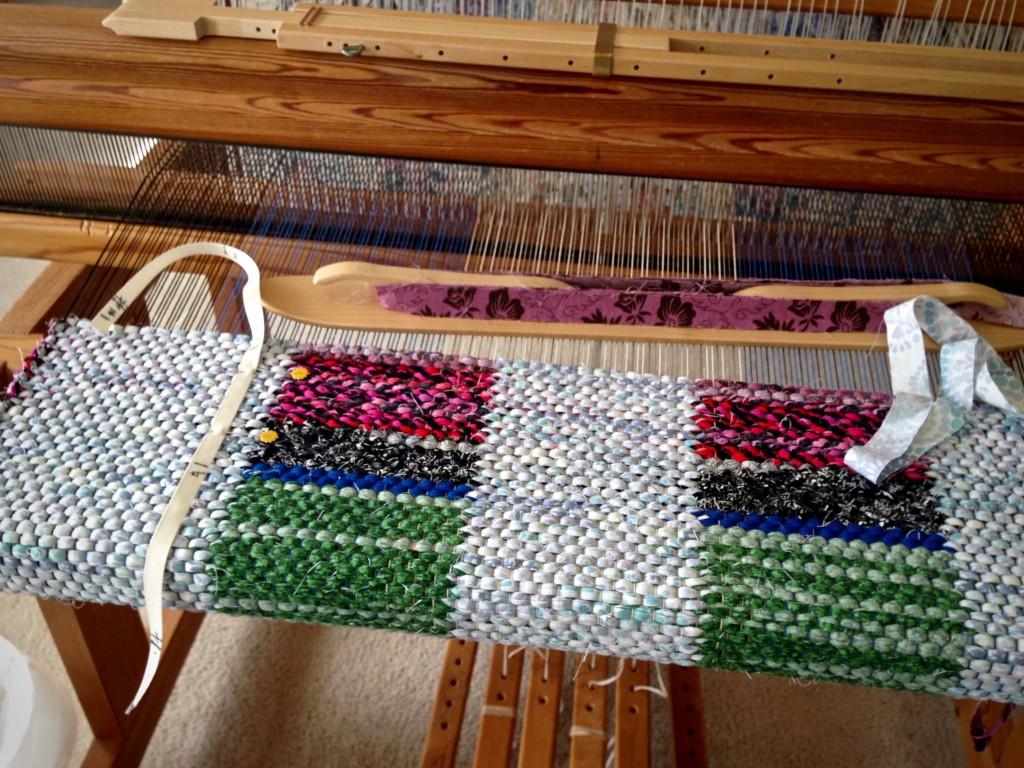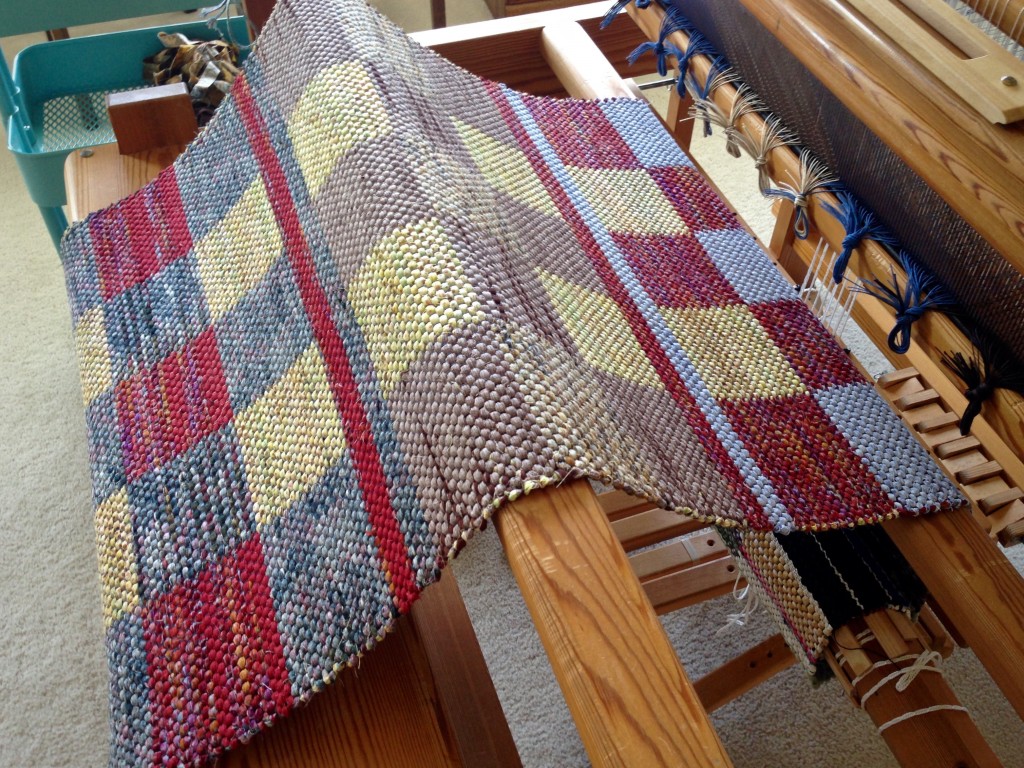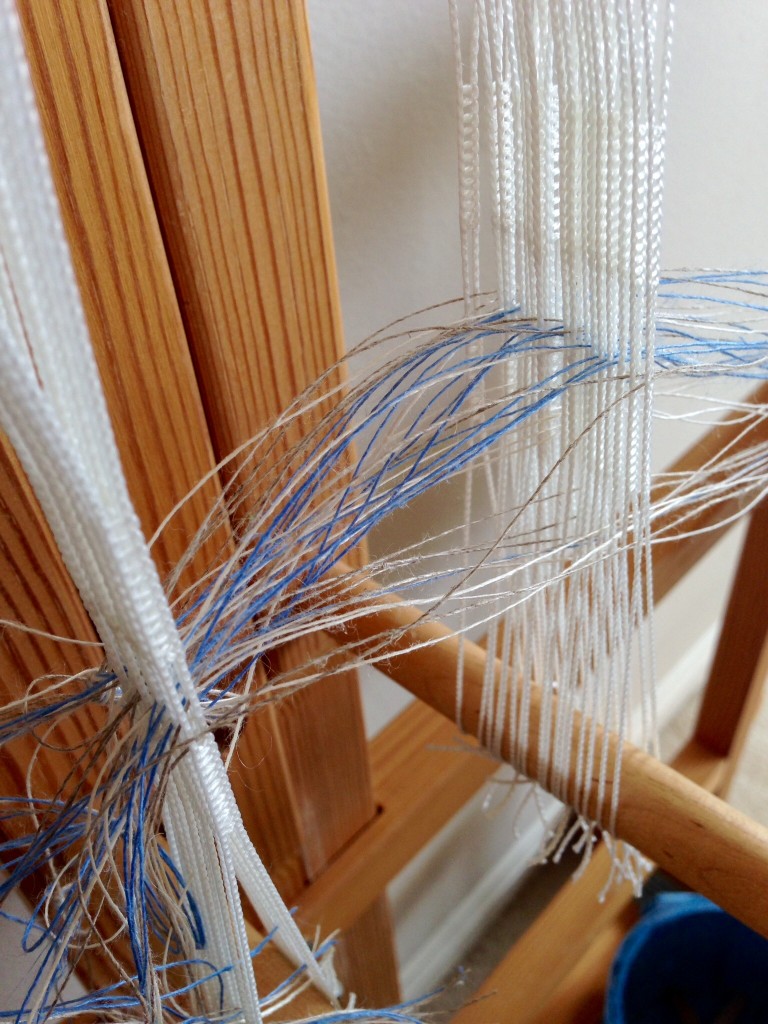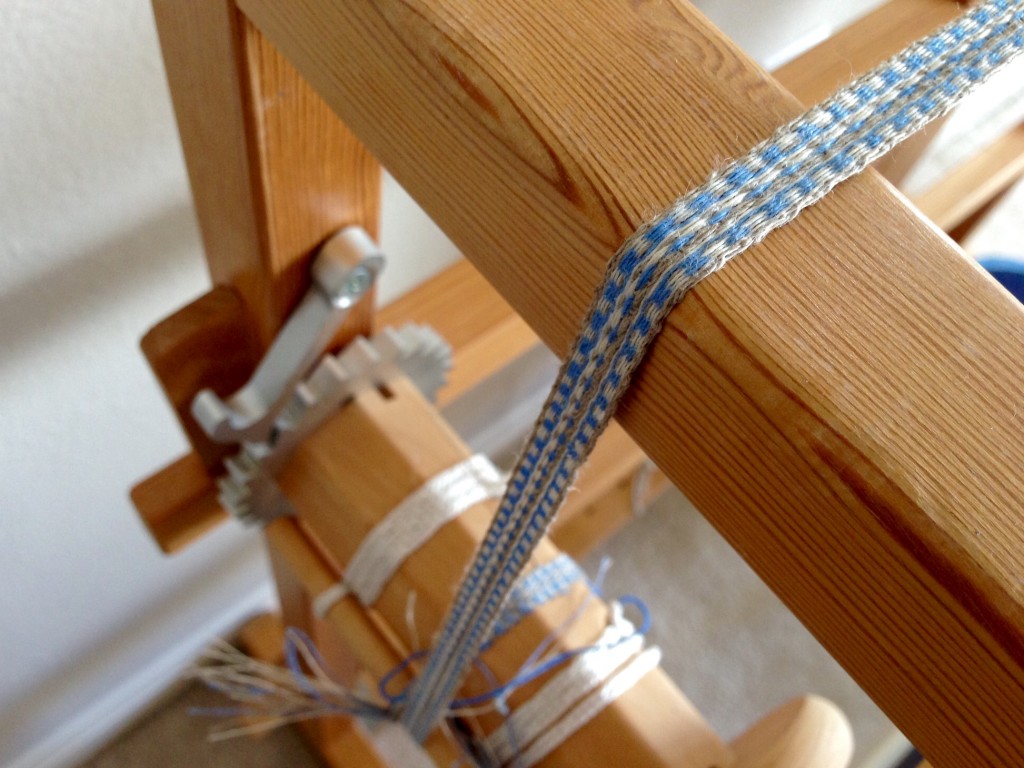Like sorting laundry, I separated the fabric into darks and lights for this design. I am hopeful that with the simple distinction of dark and light, the overall symmetrical design will be evident. We will not be able to judge the success of this idea until it comes off the loom.

Sometimes I question the plan, even though it is drawn out on graph paper. I wonder how the finished rug will look. But then I remind myself that I see the cloth from the breast beam to the fell line, which is a very small segment of the whole design. I have to trust that the graphed design is the way to go, and I make up my mind to stick with it.
God loves all of us. It takes courage to love Him back. We love God by walking in His ways. That is not always easy. It means learning His plan with a humble heart, and making adjustments to our thoughts and actions. It is also recognizing that we see a very small segment of the overall picture. To go my own way instead would be short-sighted. The designer knew what He was doing in the beginning. Surely, He will carry His good plan through to the end.
May your designs come to life.
Love,
Karen









